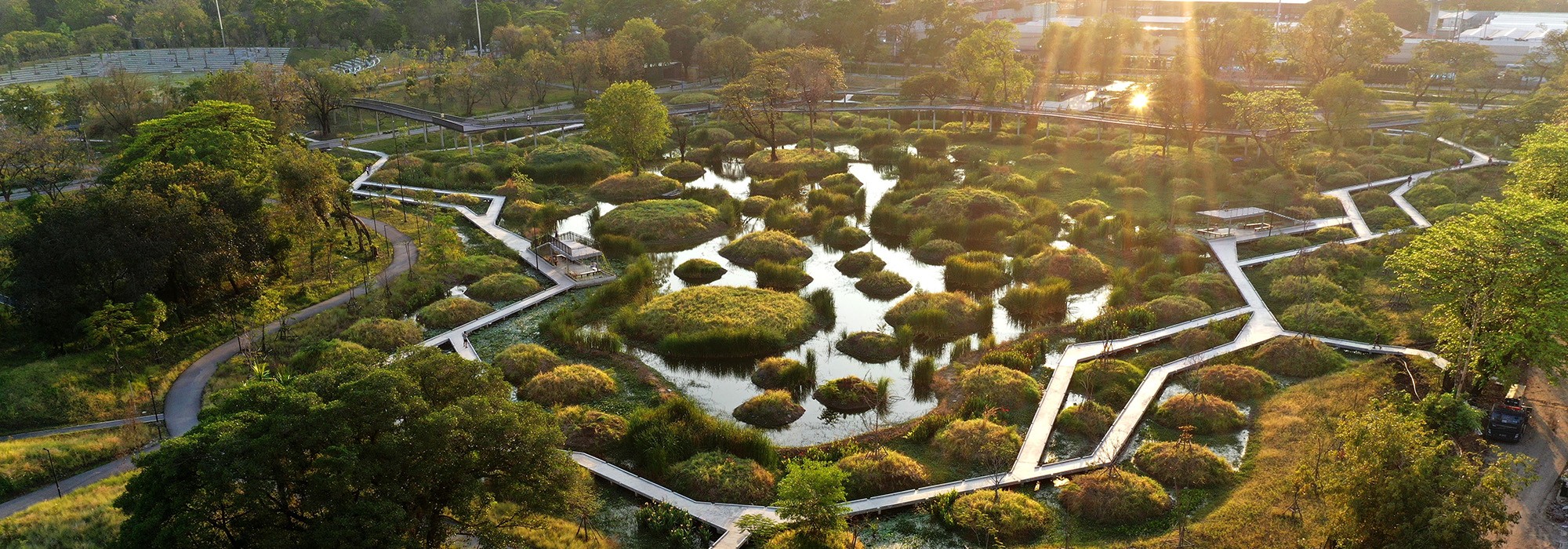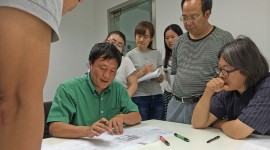Three Landscapes Designed by Kongjian Yu, the 2023 Oberlander Prize Laureate
Zhongshan Shipyard Park, Zhongshan, Guandong Province, 2001. A 27-acre park built on the site of a 1950s shipyard that went bankrupt in 1999. Rather that raze the culturally significant site, the design, an early example of the “sponge cities” concept, retained some of the extant vernacular architecture, along with machines, docks, and other industrial structures that were repurposed. Yu believes in the retention of cultural landscape heritage, including industrial sites and working landscapes.
Red Ribbon Park, Qinhuangdao, Hebei Province, 2007. The principal design element is an eye-catching yet minimal intervention – a surgically-inserted, sinuous 1,640-feet-long (500-meter) red benchlike structure threaded along the length of a narrow rectangular park on the Tanghe River. It integrates a boardwalk, seating, and lighting; lit from inside, it glows red at night. The park retained the site’s lush and diverse native vegetation, eliminated dumped garbage, and provided scenic and recreational opportunities.
Benjakitti Forest Park, Bangkok, Thailand, 2023. This 104.5-acre (42.3-hectare) park at a former tobacco factory with numerous single-story warehouses was transformed into the largest public recreational space for residents of downtown Bangkok and its environs in just eighteen months. In constructing the park, extant trees were retained and integrated into the new design, while several vernacular warehouses were repurposed. Three new constructed wetlands feature hundreds of small islands that provide habitat and manage stormwater.







